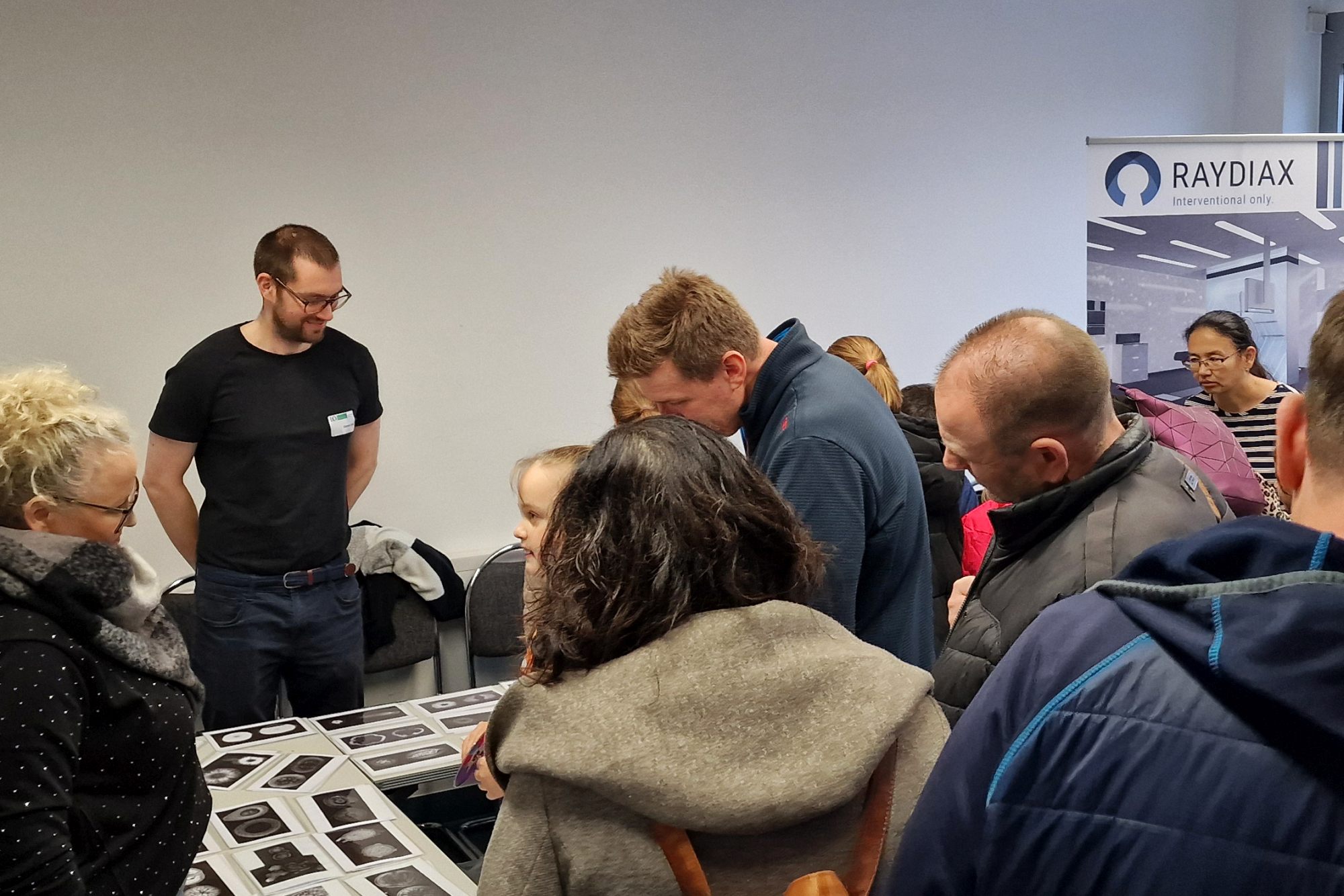NEWS
How does an MRI work? STIMULATE demonstrated it live at Physics Day
On 8 November 2025, Otto von Guericke University Magdeburg hosted this year's Physics Day. Between 1 p.m. and 5 p.m., the doors of Building 16 on the campus at Universitätsplatz were open to anyone interested in experiencing physics up close.
The Research Campus STIMULATE was also represented with an interactive contribution and answered the question: ‘How can magnetic fields be used to see inside the body without any pain or radiation?‘
The focus was on the OCRA tabletop MRI system, a miniature magnetic resonance imaging device developed specifically at the research campus that fits on a table but works on the same physical principle as a large clinical MRI system. Through live measurements and experiments, visitors were able to experience how magnetic fields and radio waves are used in MRI to generate images from inside water-containing objects. This allows MRI to visualise the inside of, for example, the brain, organs or even fruits and plants.
The demonstration of the mini MRI for use in plant science research was particularly impressive. Marcus Prier, a scientist at the Research Campus STIMULATE, showed how he has further developed the tabletop MRI as part of the EU project AgriPETMRI. This now makes it possible to measure plant structures on the move in the field, thereby gaining new insights into water and nutrient transport processes. This is an exciting example of the interdisciplinary use of modern imaging technologies.
With lectures, hands-on experiments, laboratory tours and study information, Physics Day once again provided an inspiring platform for bringing science to life. The STIMULATE team was delighted with the lively interest and numerous curious questions about modern medical technology and imaging research ‘Made in Magdeburg’.
Wie funktioniert ein MRT? STIMULATE zeigte es live beim Tag der Physik
Am 8. November 2025 lud die Otto-von-Guericke-Universität Magdeburg zum diesjährigen Tag der Physik ein. Zwischen 13:00 und 17:00 Uhr öffneten sich im Gebäude 16 auf dem Campus am Universitätsplatz die Türen für alle, die Lust hatten, Physik hautnah zu erleben.
Auch der Forschungscampus STIMULATE war mit einem interaktiven Beitrag vertreten und beantwortete die Frage: „Wie kann man mit Magnetfeldern ganz ohne Schmerzen und Strahlung in das Körperinnere hineinsehen?“
Im Mittelpunkt stand das OCRA-Tabletop-MRT-System, ein eigens am Forschungscampus entwickelter Miniatur-Magnetresonanztomograph, der auf einen Tisch passt, aber nach demselben physikalischen Prinzip arbeitet wie ein großes klinisches MRT-System. Anhand von Live-Messungen und Experimenten konnten Besuchende erleben, wie im MRT Magnetfelder und Radiowellen genutzt werden, um Bilder aus dem Inneren von wasserhaltigen Objekten zu erzeugen. So kann im MRT das Innere von z.B. Gehirn, Organen oder sogar Früchten und Pflanzen sichtbar gemacht werden.
Besonders eindrucksvoll war die Demonstration des Mini-MRTs für den Einsatz in der pflanzenwissenschaftlichen Forschung. Marcus Prier, Wissenschaftler am Forschungscampus STIMULATE, zeigte, wie er das Tabletop-MRT im Rahmen des EU-Projekts AgriPETMRI weiterentwickelt hat. Damit ist es nun möglich, pflanzliche Strukturen mobil auf dem Feld zu vermessen und so neue Einblicke in Wasser- und Nährstofftransportprozesse zu gewinnen – ein spannendes Beispiel für den interdisziplinären Einsatz moderner Bildgebungstechnologien.
Der Tag der Physik bot mit Vorträgen, Mitmach-Experimenten, Laborführungen und Studieninformationen erneut eine inspirierende Plattform, um Wissenschaft erlebbar zu machen. Das STIMULATE-Team freute sich über das rege Interesse und zahlreiche neugierige Fragen zu moderner Medizintechnik und bildgebender Forschung „Made in Magdeburg“.


